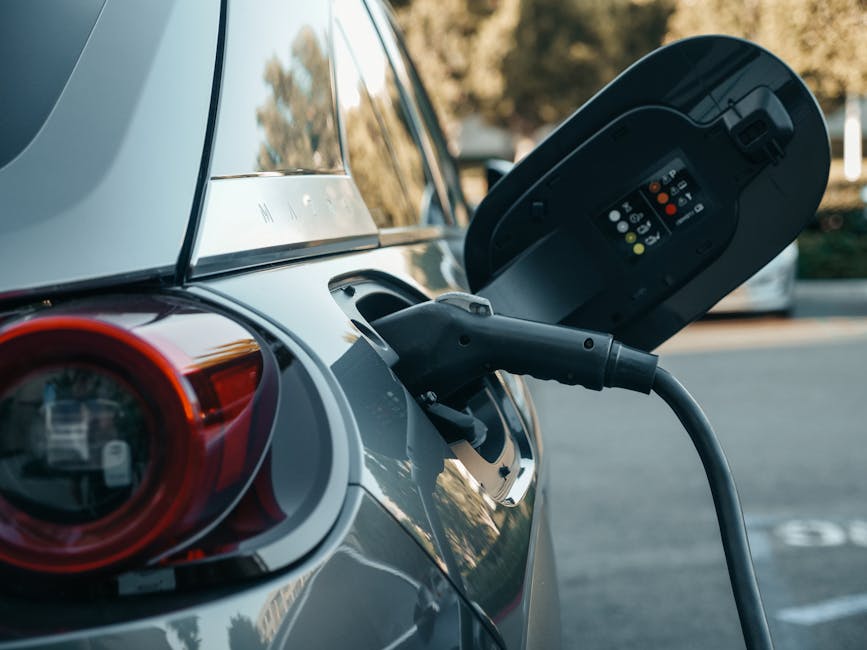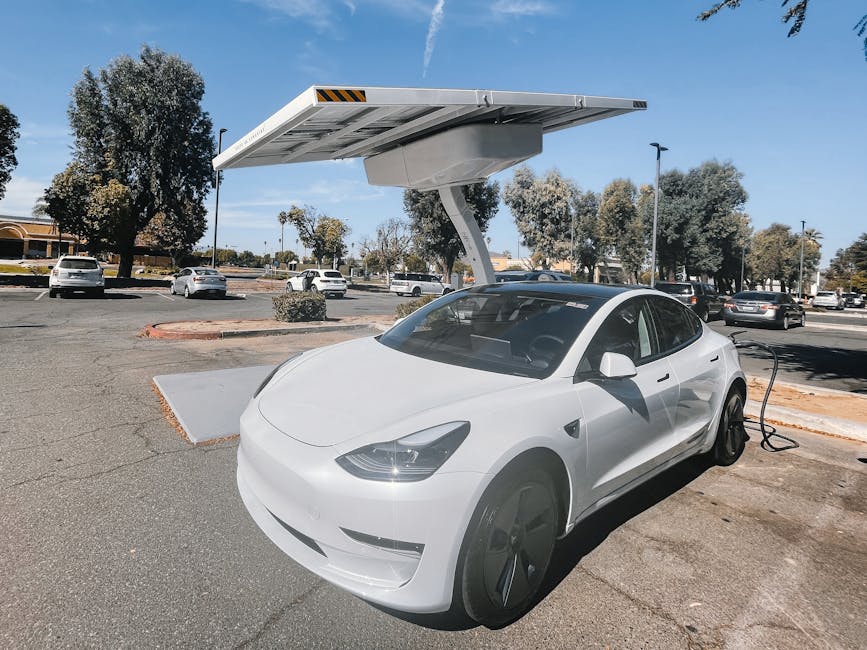Rethinking the Road: Community EV Charging Transforming Cities
Urban areas are evolving, and one of the most impactful trends reshaping our cities is the rise of community-based electric vehicle (EV) charging initiatives. With the increasing demand for EVs, innovative charging solutions are not just enhancing the charging infrastructure—they're also engaging local businesses, creating jobs, and promoting energy savings. This article dives into how these community-driven initiatives are transforming urban energy consumption and revitalizing local economies. Buckle up; it's time to explore the revolution on the road!
The Charge Towards Community-Centric Solutions

As more consumers shift to electric vehicles, cities are confronted with a significant question: How can local governments efficiently integrate EV charging into their existing frameworks? The answer often lies in community-driven initiatives that not only address infrastructure needs but also invite local stakeholders to participate in the journey.
Community-based EV charging initiatives can open up opportunities for local businesses, fostering collaboration and generating revenue through increased customer traffic. For instance, think about your favorite coffee shop or supermarket; they could install charging stations, encouraging EV owners to stop by while they recharge. This symbiotic relationship can create a win-win scenario for both businesses and consumers—supporting the local economy while meeting the demand for electric mobility.
Successful Case Studies in Community-Based EV Charging

A wealth of initiatives nationwide showcases how effective community-based EV charging solutions can be. Consider Amsterdam, for instance, where local neighborhoods have taken the lead in deploying charging stations. By leveraging available public spaces and collaborating with local businesses, they have successfully integrated charging facilities that have enhanced access for EV owners. As noted in an article by Harvard Business Review, similar models could inspire cities worldwide to rethink public space use in favor of sustainability.
Another prime example is the "EVs for Good" initiative in San Diego, California. This program aims to deploy affordable, community-managed charging stations that simultaneously serve underrepresented communities. The initiative not only addresses equity but strengthens community ties by creating jobs and providing affordable EV access to households that historically lacked access to clean transportation.
Promoting Local Businesses: The Ripple Effect of EV Charging Stations

When communities establish charging stations, it isn't just about power for vehicles—it's about fueling local economies. Research has shown that businesses near charging stations experience a 5% to 20% increase in sales. Imagine the local diner gaining new customers simply because they offer quick charging while patrons enjoy a meal. Innovative charging stations not only draw in more foot traffic but can generate ancillary revenue streams from partnerships with local businesses.
Additionally, local governments can create incentives for businesses to install EV chargers. Tax breaks or grants can motivate organizations to invest, and as a result, prosperity ripples across entire neighborhoods. This ethos of local engagement can be seen in Michigan through community-based EV charging collaborations that combine environmental stewardship with economic enhancement. Local leaders and policymakers should study community-focused charging solutions to replicate this success.
Job Creation Through EV Charging Infrastructure

The expansion of charging networks also has a profound impact on job creation. As demand rises, new jobs emerge, spanning from hardware installation to maintenance, customer service, and education. According to a report by the International Energy Agency, transitioning to electric mobility could drive millions of jobs across the globe by 2030. Community-led partnerships can capitalize on this potential, ensuring residents gain employment opportunities directly from these initiatives.
Local workshops can be organized to train residents in EV charging station installation and maintenance. This hands-on engagement fosters local skills development and builds a sense of ownership within the community. Policymakers and advocates must champion programs that weave job creation into the fabric of EV infrastructure development.
Energy Savings and Environmental Benefits

Neutralizing the carbon footprint is essential in the fight against climate change. Community-driven EV charging initiatives not only promote electric vehicle usage—they also enhance energy efficiency. When communities invest in sustainable charging solutions, they initiate a transformative cycle of energy utilization.
Taking advantage of renewable energy sources to power these charging stations can further amplify savings. Solar panels paired with EV chargers can create a closed-loop system whereby energy generation and usage coexist harmoniously. Neighborhoods can harness local solar energy, decreasing reliance on fossil fuels and minimizing energy costs. Cities like Los Angeles are exploring initiatives to integrate solar charging stations into their infrastructure, representing a bold step towards sustainability.
Additionally, as charging technology evolves, opportunities emerge for communities to explore energy storage solutions. Installing battery storage alongside charging stations can enable communities to draw and store power during off-peak hours, further reducing costs and emissions. These energy efficiency benefits underscore the necessity of integrating community voices into policy decisions surrounding EV infrastructure.
Actionable Insights for Policymakers & Community Leaders

Building a thriving community-oriented EV charging network necessitates visionary leadership and collaboration. Here are several actionable insights for policymakers and community leaders looking to implement similar projects:
-
Engage Local Stakeholders: Involve local businesses, residents, and community groups in the planning process. Their input can guide decisions on where to place chargers and how to manage costs.
-
Incentivize Participation: Create financial incentives or low-interest loans to encourage businesses to install EV charging stations. Flexibility can attract more stakeholders to the initiative.
-
Promote Awareness Campaigns: Educate residents on the benefits of EVs and available charging infrastructure. The more aware communities are, the more likely they are to explore electric vehicle ownership.
-
Leverage Technology: Use apps and platforms that share real-time data on charger availability and pricing. Transparent communication can lead to higher usage and satisfaction.
-
Focus on Equity: Ensure that initiatives target underrepresented communities who stand to benefit the most from accessible EV charging infrastructure, as detailed in the community power articles.
-
Foster Partnerships: Collaborate with local organizations to bolster community connection to the project. This partnership can create a sense of belonging, offsetting costs, and generating additional support.
-
Evolve with Sustainability Goals: Align charging initiative goals with wider regional sustainability objectives to ensure long-term compliance with climate action plans.
The Broader Impact of Community-Based EV Charging

Beyond merely fulfilling the growing demand for EV infrastructure, community-based charging models can reshape how cities prioritize sustainable initiatives as a whole. By working hand-in-hand with local entities, these efforts promote a circular economy that emphasizes collaboration, mutual benefits, and social responsibility.
Engaging diverse community members and stakeholders fosters a culture centered on sustainable practices. This, in turn, inspires government actions across various sectors, from urban planning to economic development, further extending the impact of community-driven EV charging solutions. Communities taking charge of their EV infrastructure can set the roadmap for future sustainable practices in urban environments, paving the way for greener, smarter cities.
Final Thoughts: Paving the Path to Sustainable Urban Mobility

Rethinking the road involves not only considering the vehicles we drive but also how communities interact with the world around them. Community-driven EV charging initiatives empower cities to embrace sustainability while boosting local economies and creating jobs. The transformative potential of these initiatives is immense—especially as we chase broader goals of achieving a net-zero future.
Policymakers and community leaders must invest in building resilient ecosystems that nourish local businesses while meeting energy consumption challenges. Let's rethink the road together, making every charge count toward a brighter, sustainable future.
For a deeper understanding of the initiatives shaping our cities, exploring urban transport solutions and technology's role could amplify our knowledge in this dynamic landscape.



